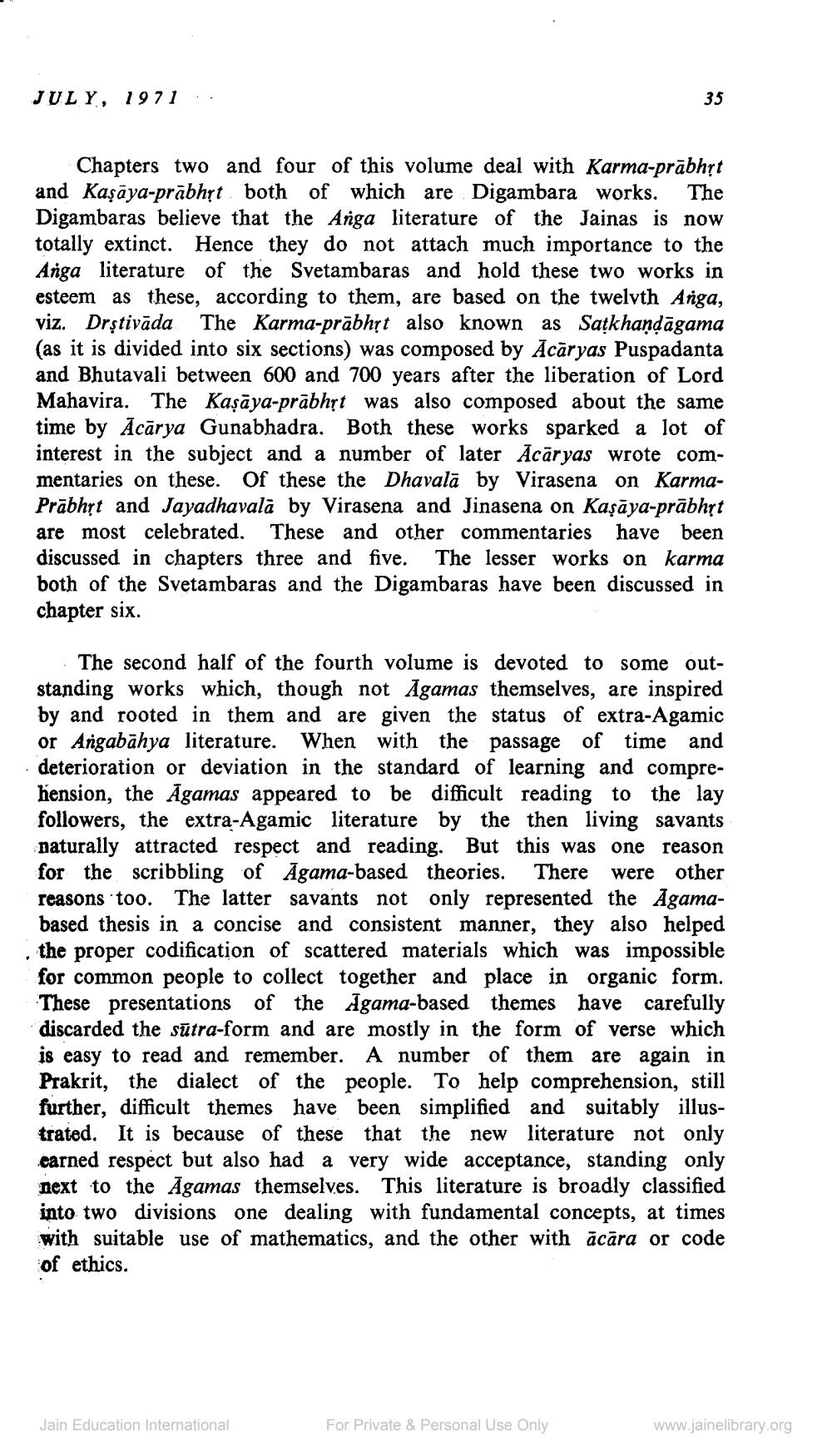________________
·
JULY, 1971
Chapters two and four of this volume deal with Karma-prabhṛt and Kaṣāya-prabhṛt both of which are Digambara works. The Digambaras believe that the Anga literature of the Jainas is now totally extinct. Hence they do not attach much importance to the Anga literature of the Svetambaras and hold these two works in esteem as these, according to them, are based on the twelvth Anga, viz. Drştivāda The Karma-prabhṛt also known as Satkhanḍāgama (as it is divided into six sections) was composed by Acaryas Puspadanta and Bhutavali between 600 and 700 years after the liberation of Lord Mahavira. The Kaṣāya-prabhṛt was also composed about the same time by Acarya Gunabhadra. Both these works sparked a lot of interest in the subject and a number of later Acaryas wrote commentaries on these. Of these the Dhavala by Virasena on KarmaPrabhṛt and Jayadhavala by Virasena and Jinasena on Kaşaya-prabhṛt are most celebrated. These and other commentaries have been discussed in chapters three and five. The lesser works on karma both of the Svetambaras and the Digambaras have been discussed in chapter six.
35
The second half of the fourth volume is devoted to some outstanding works which, though not Agamas themselves, are inspired by and rooted in them and are given the status of extra-Agamic or Angabahya literature. When with the passage of time and deterioration or deviation in the standard of learning and comprehension, the Agamas appeared to be difficult reading to the lay followers, the extra-Agamic literature by the then living savants naturally attracted respect and reading. But this was one reason for the scribbling of Agama-based theories. There were other reasons too. The latter savants not only represented the Agamabased thesis in a concise and consistent manner, they also helped the proper codification of scattered materials which was impossible for common people to collect together and place in organic form. These presentations of the Agama-based themes have carefully discarded the sutra-form and are mostly in the form of verse which is easy to read and remember. A number of them are again in Prakrit, the dialect of the people. To help comprehension, still further, difficult themes have been simplified and suitably illustrated. It is because of these that the new literature not only earned respect but also had a very wide acceptance, standing only next to the Agamas themselves. This literature is broadly classified into two divisions one dealing with fundamental concepts, at times with suitable use of mathematics, and the other with acara or code of ethics.
Jain Education International
For Private & Personal Use Only
www.jainelibrary.org




